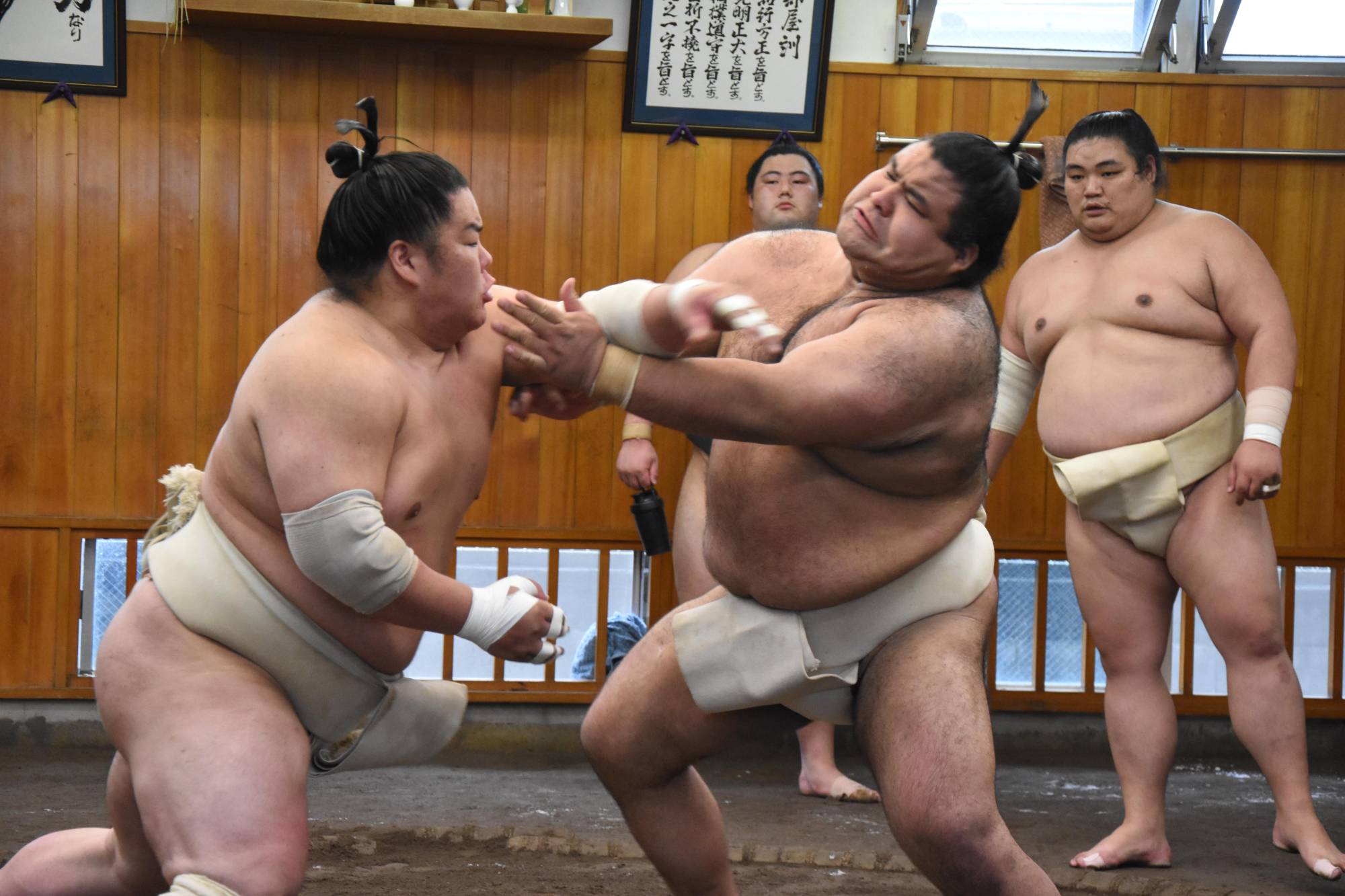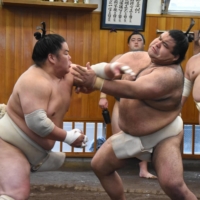Former ozeki Takayasu was visible this week at a pair of events that should impact the sumo landscape in both the medium and long term.
The veteran was present at the official unveiling of an imposing new stable building belonging to former stablemate Kisenosato — now Nishonoseki oyakata — on Sunday.
The massive structure in rural Ibaraki Prefecture is a step above all other existing sumo stables.
Spacious and comfortable, its state-of-the-art facilities and layout are aimed at providing the best possible living and training environment for rikishi.
While Nishonoseki is a popular former yokozuna with a support network that few others can match, his creation of a next-level sumo stable could conceivably kick-start the sort of stadium and training ground arms race that has taken place in many other sports around the world in recent years.
Sumo, in this area, is ripe for change, as most current stable buildings are indistinguishable from those of 30, 40, or even 50 years ago, with some actually in continuous use since the 1960s and 1970s.
At a time when finding new recruits is an increasingly difficult task, being able to offer professional and modern facilities gives a stable a significant advantage in the talent-acquisition race.
While the full impact of Nishonoseki’s new heya may not be seen for years, Takayasu was also in attendance this week at an event which figures to have much more immediate consequences.
The former ozeki was an active participant in one of the first degeiko (outside training) sessions to take place since training at other stables resumed this week following a two year ban.
That 2020 edict was put in place to lower the risk of COVID-19 infection for wrestlers at a time when one rikishi (Shobushi) had died, and the virus was raging, with no vaccine yet available.
With coronavirus rates currently falling and a gradual easing of restrictions taking place nationwide, the Japan Sumo Association decided that the time was right to allow stables to open their doors to wrestlers from other heya.
On Monday, Takayasu traveled 13 kilometers north to Oitekaze stable — located just across the border from Tokyo in Saitama prefecture, and had 18 training bouts over the course of 30 minutes with Daieisho, Tobizaru, Daiamami and Daishoho.
It was a major change of pace for the 32-year-old, as his own stable (Taganoura) has no other sekitori-level rikishi, meaning the vast majority of his tournament preparation over the past two years has come against significantly weaker opponents.
Asked whether he had been looking forward to external training, Takayasu replied, “In the current situation, the only chance I have to go chest-to-chest with sekitori are the (limited JSA pre-tournament) joint training sessions, so I was looking forward to doing degeiko. I was really excited, and able to train today with that feeling.”
With a runner-up performance in March being Takayasu’s only winning record in the past 12 months, the resumption of degeiko comes at a perfect time for the Ibaraki native.
Although it’s arguable that an inability to handle the pressure at key moments — rather than poor physical condition — is the main reason the former ozeki has never won a title, better preparation against higher-level competition can only help his quest to finally lift the Emperor’s Cup.
After 11 bouts against komusubi Daieisho, Takayasu said he was “Grateful for the opportunity to do much more training with a strong pusher thruster than is possible in my own stable.”
Although 11 wins out of 18 isn’t anything to write home about for a rikishi of his stature, results in training sessions are of far less importance than the overall number of bouts and the intensity of the practice.
On that theme, Takayasu informed the reporters in attendance that “Being able to do decent sumo in training only started today so I'd like to gradually increase the pace from here on out, and do vigorous training in various stables.”
Daiesho, for his part, also expressed gratitude at being able to train with a strong opponent like Takayasu, saying that his presence changed the atmosphere in the stable.
“During (the coronavirus pandemic) I’ve only been able to train with stablemates. You can really reap the rewards (of training against rikishi from other stables). It allows you to discover your weak points — there are many positives like that.”
Takayasu and Tobizaru both spoke about how the training would help their stamina, with the latter man particularly keen to avoid the kind of second-week meltdown that took place in the Kokugikan in May.
If improved physical conditioning and better stamina are general outcomes of the resumption of degeiko, it can only be a positive for sumo.
A yokozuna may have lifted the Emperor’s Cup last time out, but it was far from a vintage performance and arguably was as much of a result of an overall lack of quality in the top division than of Terunofuji taking things to a higher level.
While parity has its benefits, no one wants to see a field leveled by an absence of great sumo.
The degeiko ban isn’t the only reason for the drop in the performance level of sumo’s top tier, but two years without constant rigorous training against unfamiliar opponents has undoubtedly had an impact.
With the physically toughest and most demanding tournament of the year next up on the schedule, the lifting of the degeiko ban couldn’t have come at a more opportune moment.
Nagoya 2022 has no chance of living up to the drama of Hakuho’s swansong final championship last July, but a field of contenders who are better prepared than they’ve been in two years should ensure an exciting tournament next month.



















With your current subscription plan you can comment on stories. However, before writing your first comment, please create a display name in the Profile section of your subscriber account page.